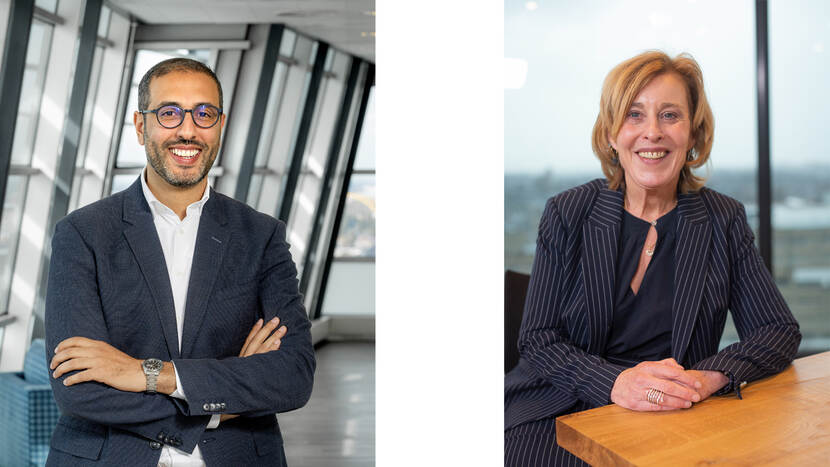Historically, the MEB has always played a significant role in Europe. Aimad Torqui, Head of the Europe, Medicine Use & Veterinary Division, and Sabine Straus, Chair of the Pharmacovigilance Risk Assessment Committee (PRAC), look beyond the borders and talk about the MEB’s position in Europe in 2022.
“In terms of procedures and ‘production’, and the amount of work we do within the European network, we’re among the leaders,” says Aimad. “This proved true again in 2022. The MEB staff who chair various committees at the European level are a great example of our shared responsibility at that level. It shows how relevant we are in the network. So it’s good to take a critical look at what knowledge we need and must secure or expand.”
PRAC Chair Sabine Straus notes that work resulting from the Covid pandemic is gradually taking up less of the committee’s time. “In 2022, it was great to be able to return to a more normal pace of work. Many projects and strategic plans had been shelved because of Covid. In 2022, we were able to start them up again.”
At the same time, Sabine knows Covid has not gone away. “There’s still a lot of it around, and that will remain true for a while. We’re still getting a lot of questions, particularly about the Covid vaccines. There’s been research into what mechanisms cause certain adverse reactions, and whether certain conditions are actually adverse reactions.
Aimad points out that the work of the MEB and the Dutch representatives in Europe is once again becoming more visible. “Medicine authorities are under scrutiny, which has both positive and negative aspects. We can respond more quickly when something happens, but it also generates more debate and more work. Next year, we want to look at whether there’s a different way we could approach that work.”
Looking back, Aimad says the year has been busy. “The aftermath of the pandemic and Brexit created a lot of work in 2022 for the European network of medicine authorities. The departure of a member state that had always taken on a lot of work meant that tasks had to be redistributed.”
“In addition to ongoing cases and the analysis and assessment of reports about the Covid vaccines, there were various other major procedures and reassessments, including referrals,” says Sabine. “These always involve special, more intensive processes.” She is proud of the way the PRAC has handled everything. “In spite of the amount of work, we’ve continually been guided by the available data and scientific assessments in our decisions, which I think is great.”
Collaboration
Medicine shortages have regularly made the news in the Netherlands. “But the problem is not confined to the Netherlands,” says Aimad. “It’s occurring throughout Europe. The options available to the European Medicines Agency to address this issue are being expanded, and with good reason.”
Pharmacovigilance is another area in which collaboration opportunities are being sought outside of the usual network. Sabine explains an initiative to improve the effectiveness of the PRAC’s recommendations. “We were the first body within the EMA to study the impact of our work. What do doctors do with the recommendations we issue based on our data? We have now set ourselves the goal of having more discussions with other parties. In 2022, PRISMA (PRAC Risk Minimisation Alliance) was launched, a group in which we will work with patients, pharmacists and care providers to look at how we can further limit the risks of medicines.”
Aimad and Sabine agree that more collaboration is needed at the European level. “In the longer term, the borders should be opened further,” says Aimad. “For international matters, we need to collaborate more within Europe. That’s one thing we learned during Covid. We’re going to be doing that with the European Health Union, for example. After all, health problems do not respect national borders.”
Looking ahead
In 2022, the Veterinary Medicinal Products Unit did a lot of work related to the introduction of the new Veterinary Medicinal Products Regulation. “That implementation work is starting to pay off,” says Aimad. “For human medicines, too, there’s going to be new international pharmaceutical legislation in the next few years. Laws that stimulate innovation and make the system more future proof. The current legislation is several decades old. Is that system still working well? What have we learned, and what do we expect in the future? There was a change of gears in 2022, it was a real transition year.”









